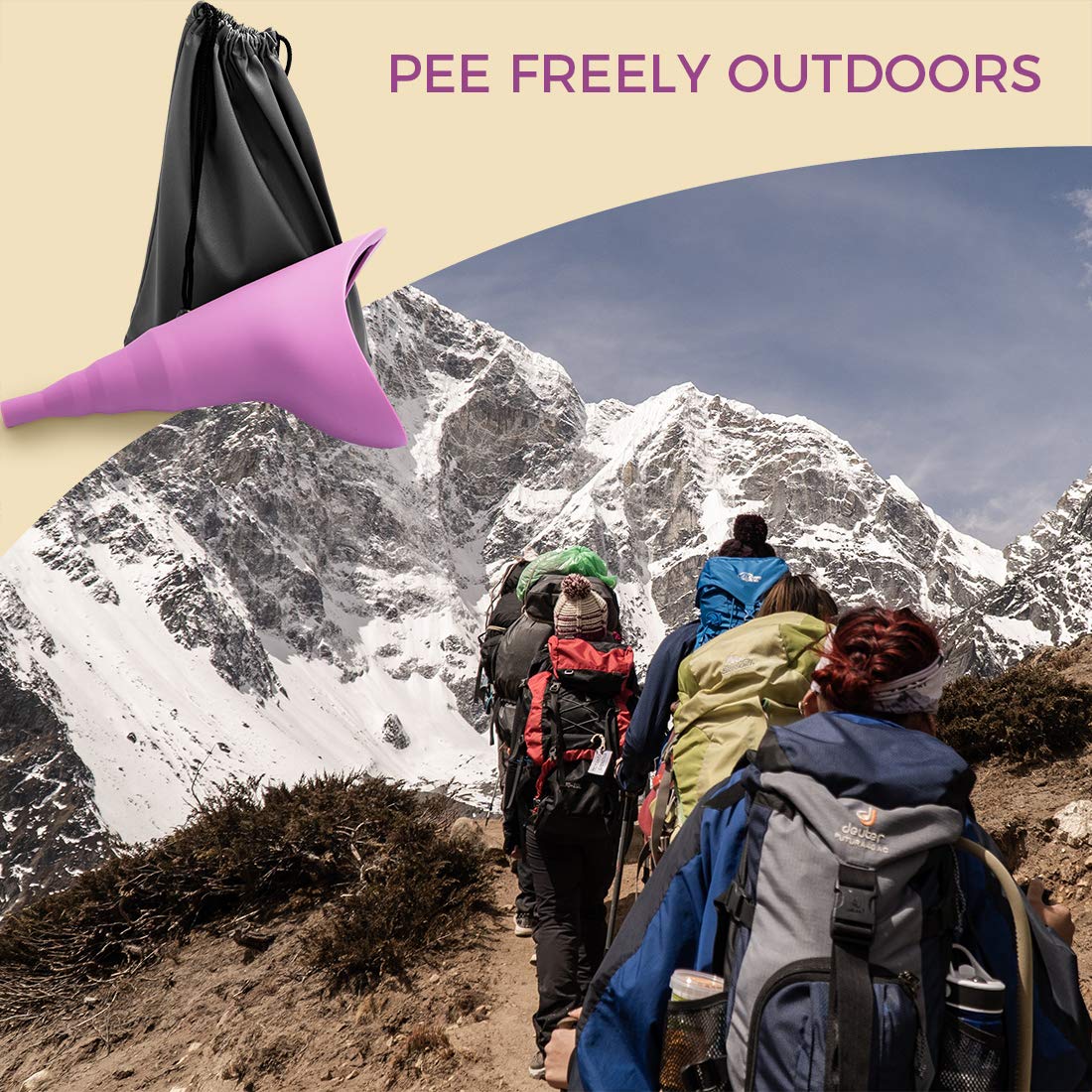Venturing into the great outdoors on a hiking adventure is an exhilarating experience. However, nature calls for everyone, and knowing how to answer that call discreetly and responsibly is crucial for both your comfort and the environment’s well-being. This guide provides practical advice and essential tips for navigating the often-awkward situation of needing to urinate while hiking, ensuring you can enjoy your trek without any unnecessary discomfort or environmental impact. From choosing the right spot to understanding leave-no-trace principles, we’ve got you covered.
Preparation is Key
Hydration and Timing
Staying hydrated is essential for hiking, but it also means you’ll need to pee more often. Consider these factors:
- Hydration Strategy: Drink enough water to stay hydrated, but avoid excessive intake right before or during steep climbs.
- Timing Your Breaks: Take advantage of designated restrooms at trailheads or rest stops whenever possible. Plan your stops strategically.
Essential Gear
Having the right gear can make the process much more comfortable and hygienic:
- Toilet Paper or Wipes: Pack biodegradable toilet paper or wet wipes in a waterproof bag.
- Hand Sanitizer: Essential for maintaining hygiene after using the bathroom.
- Trowel or Small Shovel: For burying solid waste (if applicable and if allowed in the area).
- Ziploc Bags: For packing out used toilet paper or wipes. Leave No Trace!
- Privacy Aid (Optional): A sarong, small towel, or even a large leaf can provide a bit of extra privacy.
Finding the Right Spot
Location, Location, Location
Choosing the right location is crucial for both privacy and environmental responsibility:
- Distance from Water: Stay at least 200 feet (70 big steps) away from any water source, including streams, lakes, and rivers. This prevents contamination.
- Out of Sight: Find a spot that is hidden from the trail and other hikers. Consider using natural features like trees, bushes, or rocks for cover.
- Avoid Sensitive Areas: Steer clear of campsites, picnic areas, and fragile vegetation.
The Art of Squatting (for Women)
Mastering the squatting technique is essential for women hikers:
- Find a Stable Position: Practice beforehand to find a comfortable and stable squatting position.
- Lower Slowly: Lower yourself slowly and carefully to avoid accidents.
- Be Aware of Your Surroundings: Watch out for poison ivy, thorns, and other potential hazards.
The Leave No Trace Principle
Pack It In, Pack It Out
The most important principle is to pack out everything you pack in. This includes used toilet paper and wipes.
Factoid: Toilet paper can take months or even years to decompose in the wild, and it can attract animals. Always pack it out!
Burying vs. Packing Out
In some areas, burying solid waste is permitted, while in others, it is not. Always check local regulations before your hike.
- Burying (If Permitted): Dig a small hole 6-8 inches deep and at least 200 feet from water sources. Bury solid waste and cover it with soil.
- Packing Out (Always Recommended for Toilet Paper): Use a Ziploc bag to pack out used toilet paper and wipes. Dispose of them properly in a trash can.
Tips for Men
While men may have a slightly easier time with urination, the principles of privacy and Leave No Trace still apply.
- Turn Away from the Trail: Find a discreet spot and turn away from the trail before urinating.
- Distance from Water: Maintain a distance of at least 200 feet from any water source.
- Consider the Wind: Be mindful of the wind direction to avoid spraying yourself or others.
Dealing with Menstruation While Hiking
Menstruation can present additional challenges while hiking. Here are some tips:
- Choose the Right Products: Consider using a menstrual cup or period underwear, which are reusable and can reduce waste.
- Pack Out Used Products: Pack out all used pads, tampons, or other menstrual products in a Ziploc bag;
- Proper Hygiene: Use wet wipes or hand sanitizer to maintain hygiene.
Factoid: Many hikers find that using a pee funnel (also known as a female urination device) can make it easier and more comfortable to urinate while hiking, especially for women.
FAQ
Q: Is it okay to pee on a tree?
A: While it may seem harmless, peeing on a tree can attract animals and potentially damage the tree’s roots. It’s best to avoid it and follow the 200-foot rule.
Q: What if I don’t have toilet paper?
A: If you run out of toilet paper, you can use natural materials like smooth rocks, large leaves (avoiding poisonous plants), or snow (if available). Always pack out any materials you use. Consider carrying a small backup supply of toilet paper or wipes.
Q: Is it okay to bury toilet paper if it’s biodegradable?
A: While biodegradable toilet paper will eventually decompose, it can still take a long time and attract animals. It’s always best to pack it out, regardless of whether it’s biodegradable.
Q: What if I have to go #2 while hiking?
A: The same principles apply: find a spot at least 200 feet from any water source, dig a hole 6-8 inches deep (if permitted), and bury your waste. Pack out all toilet paper and wipes.
Q: How can I make the squatting process easier?
A: Practice squatting at home to find a comfortable and stable position. You can also use trekking poles for added stability. Consider using a pee funnel for easier urination.

